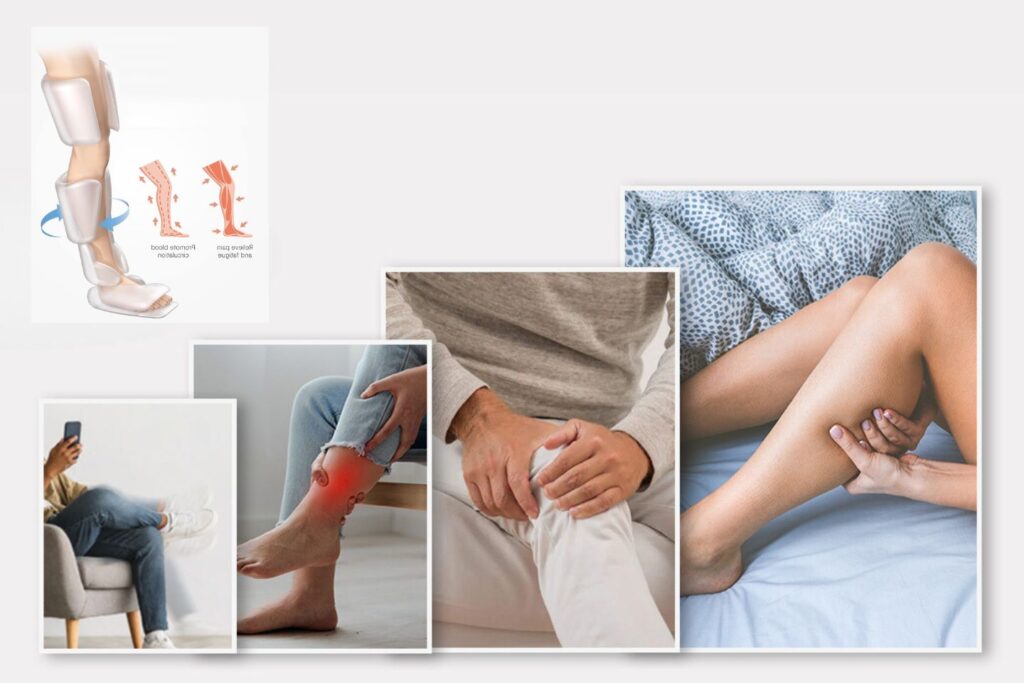Compression boots are a recovery tool aimed at enhancing the body’s natural healing process and reducing recovery time after strenuous physical activity. These devices use controlled pressure to increase blood flow to the limbs, theoretically aiding in flushing out metabolic waste post-exercise. If you’re an athlete or someone who exercises regularly, you may consider wearing these boots to alleviate muscle soreness and improve recovery.
The science around compression boots presents a mixed picture. Some research suggests that the use of recovery boots can significantly decrease muscular swelling and the discomfort that results from intense workouts. However, studies also indicate that in healthy subjects, these devices might offer little to no benefit in recovery, challenging the efficacy of the boots for every individual. As you explore the possibility of integrating them into your fitness regimen, it is essential to consider both the potential advantages and the limitations highlighted by research.
Compression Boots Overview
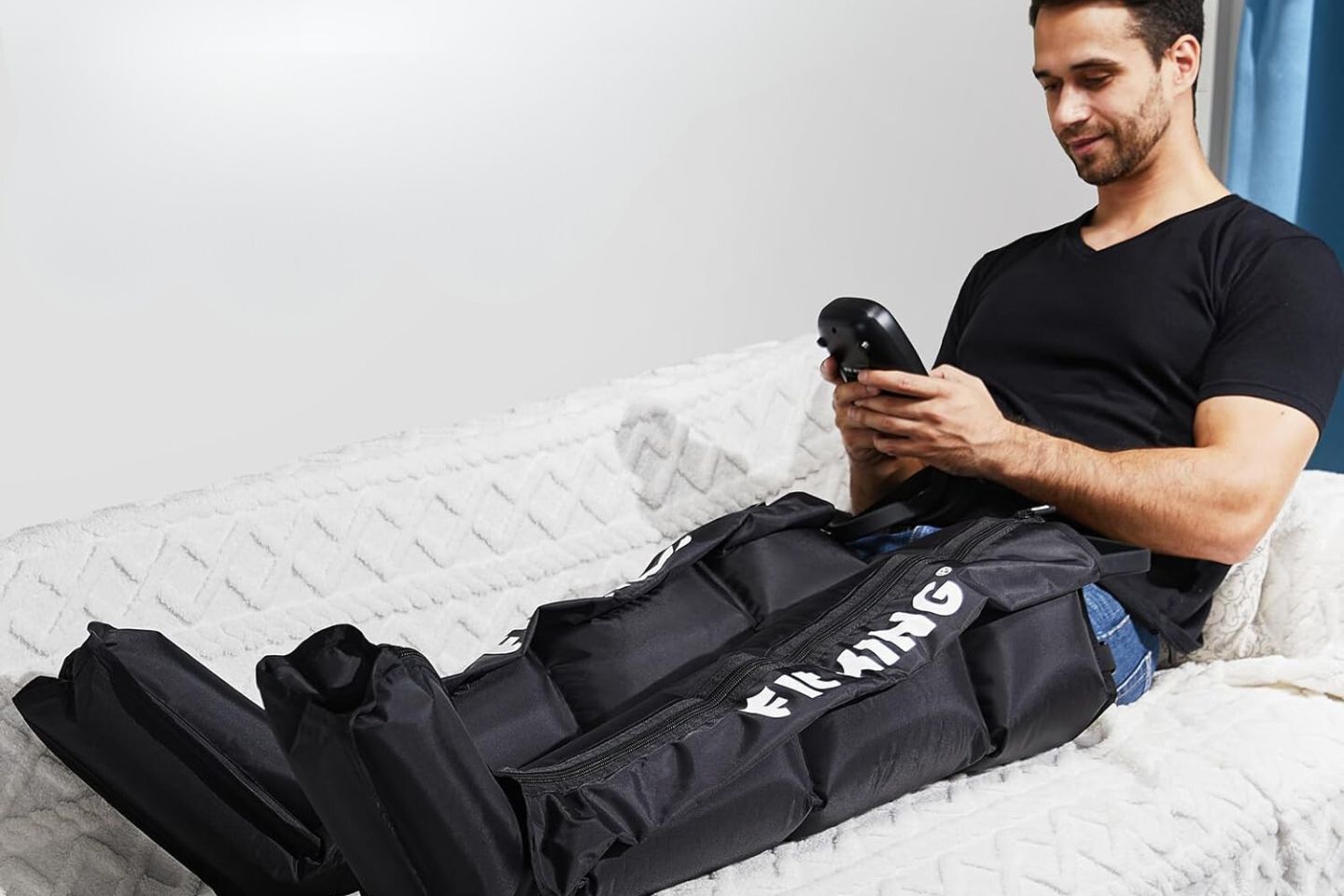

Compression boots, also known as recovery boots, are innovative devices designed to enhance your recovery after intense physical activities. Fabricated with chambers that encase your legs, these boots function by applying sequential pressure—mimicking a deep tissue massage.
- How They Work:
- Wraps your feet, ankles, and calves
- Sequentially inflates and deflates
- Improves blood circulation
- Aids in the removal of lactic acid
- Reduces muscle soreness
When using compression boots, you experience intermittent pneumatic compression. Each chamber fills with air one after another, starting from the feet and moving upwards towards the hips, which can potentially alleviate the feeling of heaviness, fatigue, and swelling.
- Typical Users Include:
- Athletes
- Individuals with circulation issues
- People experiencing muscle fatigue
These devices are commonly used for about 20-30 minutes per session, and with various pressure settings, you can personalize your experience to find a level of compression that is both comfortable and beneficial for your needs.
Understanding their potential benefits, learn that compression boots may serve as a valuable tool to assist in your post-workout recovery. However, the efficacy can vary from person to person, and it’s important to use them as a complement to other recovery methods.
How Compression Boots Work
Compression boots are devices designed to improve circulation and expedite recovery through a process known as active compression therapy.
Mechanism of Action
Your compression boots employ controlled pressure on your legs, enhancing blood flow and lymphatic circulation. This controlled pressure cycles from your feet toward your heart, mimicking the body’s natural pump mechanism. It helps reduce swelling, flush out waste products, and speed up muscle recovery.
Types of Compression
These boots primarily provide two types of compression:
- Static Compression:
- Uniform pressure is applied across your limb.
- Common in basic models.
- Dynamic Compression:
- Variable pressure that changes over time or between different zones of your limb.
- Found in more advanced models with customizable settings.
Each type has its own objectives, with dynamic compression often providing more specialized recovery options tailored to your needs.
Benefits of Compression Boots
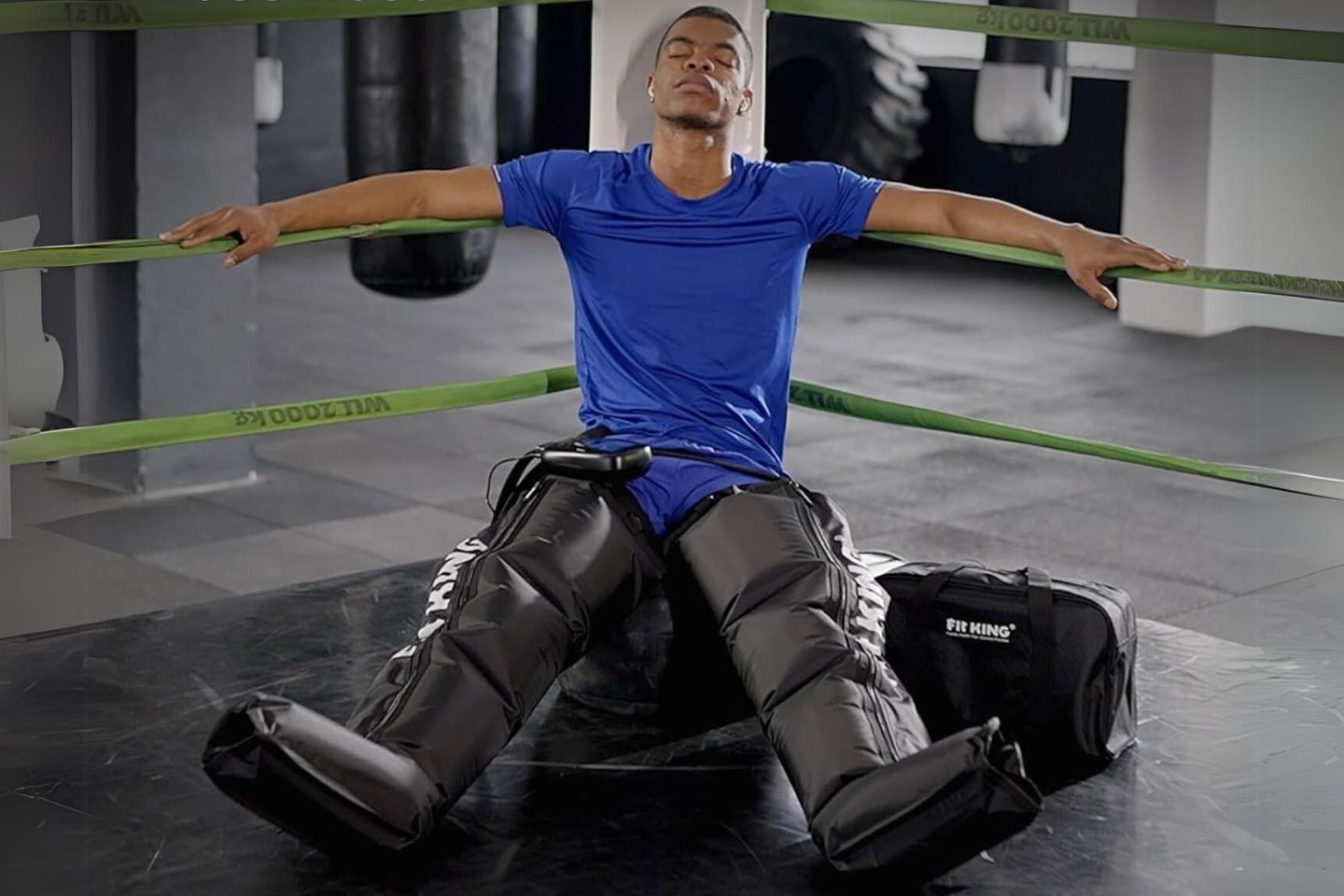

Compression boots are a valuable tool in your recovery arsenal. They offer specific advantages that can enhance your well-being and athletic performance.
Improved Circulation
Compression boots are designed to enhance blood flow through your lower limbs. The sequential air compression delivered by the boots mimics your body’s natural pumping action, helping to improve circulation and deliver oxygen-rich blood to tired muscles. If you want to try out compression boots with dynamic air compression, consider trying the Hyperice Normatec 3.
- Warm-up and recover like never before. The Normatec 3 uses dynamic air compression to create a restorative massage that helps you feel refreshed faster.👉Normatec Legs are available only available in Standard on Amazon. Standard size: 30" - 35" inseam👈
- 7 levels of compression and our patented Pulse technology deliver precise treatment to 5 overlapping zones with ZoneBoost by using biomimicry to replicate the natural muscle pumps and one-way valves of the legs. Trust us, your legs will thank you. 🏆The Normatec 3 named one of the 2023 Best Fitness Gifts for Men in Men’s Health **Source: Men’s Health Online December 20, 2023**🏆
- Normatec 3’s refreshed system design features an intuitive interface, reduced weight, and the ability to unlock next-level features and customization through the Bluetooth connected Hyperice App. Simply zip in and power up the most advanced dynamic air compression system on the planet. 👉**Power Button located on side of device**👈
Reduced Muscle Fatigue
By using compression technology, these boots can help alleviate the soreness and stiffness associated with muscle fatigue. The boots apply targeted pressure that may reduce swelling and peristaltic pulse technology helps to remove lactic acid from the muscles, preparing you for your next training session without the lingering effects of previous exertions. The FIT KING Air Compression Recovery System is a good option if you’re looking for a more worth-it a bit more affordable compression boots.
- Your Personal Therapist - This recovery boots can increase circulation. Relax your full leg like a personal therapist that helps you feel refreshed faster. Highly recommended by physical therapist.
- Science-Based Design - This system is designed by sports rehabilitation experts, which can wrap your full leg well with 4 large airbag chambers. Provides dynamic pressure to your feet, calves, knees and thighs through 4 independent air channels. Large-capacity air pump makes inflating and deflating faster and with lower noise.
- Smart Sensor Technology - Innovative sensor system will precise control the pressure and adjust the inflation volume according to the different sizes of legs, which can provide you the most suitable and safe air pressure to prevent the danger of excessive contraction.
Faster Recovery
Your recovery process is accelerated with the aid of compression boots. Intermittent pneumatic compression helps to reduce recovery time by pushing the venous blood back toward your heart more efficiently, which can lead to a quicker return to peak performance levels. If you’re looking to try out a more budget-friendly option, try the RENPHO Leg Massager
- NOTE: Because our leg massager is used in an air compression system for massage, you will feel a backlog of tightening in your legs during operation.
- Suitable Size: The calves wraps can accommodate up to 24.8 inches in circumference, and thighs up to 33.5 inches in circumference.Our maximum compatible leg size is 19.7in, and the minimum compatible size is 11.8in. Please refer to the reference size information we provide before purchasing.This foot and leg massager uses Velcro straps for easy size adjustments, making it perfect for all leg sizes.
- Designed to Massage Your Feet, Calves, and Thighs: RENPHO Leg Massager is designed with internal all-round airbags, and the professional air compression system simulates the kneading and stroking of tissues to help you recover quickly, relax tense muscles and promote blood circulation, promoting recovery after exercise.
Clinical Evidence
In exploring the effectiveness of compression boots, you will find concrete information from a variety of clinical studies and real-world feedback from athletes who use them.
Research Findings
Clinical studies have investigated the role of intermittent pneumatic compression devices—commonly known as compression boots—in athletic recovery. One systematic review emphasizes the increase in blood flow velocity, which can be crucial for preventing deep vein thrombosis and improving venous return. This is particularly notable in applications beyond basic medical care, extending into fields like sports medicine.
Studies also suggest that these devices may contribute to better recovery outcomes by reducing muscle soreness after exercise, though the exact mechanisms and optimal usage parameters are still under investigation. The breadth of research conducted indicates a positive trend toward the incorporation of compression therapy in sports recovery protocols.
Athlete Testimonials
Beyond the scope of clinical studies, athlete testimonies offer a personal perspective on the use of compression boots. Many athletes report experiencing less muscle stiffness and reduced recovery times when incorporating these devices as a regular part of their post-exercise routine. While individual experiences can vary, the consistent theme among athlete narratives is one of the beneficial effects on their overall recovery process.
Feedback from professional environments is often documented in case studies and interviews, providing a rich source of qualitative data that supports the findings from controlled research. Although anecdotal, these testimonials play a valuable role in understanding the practical application and real-world effectiveness of compression therapy solutions.
Use Cases
Compression boots are employed in various settings, each serving unique goals ranging from enhancing athletic recovery to supporting medical treatment and even for relaxation and comfort in everyday life.
Sports Performance
In the realm of sports, your recovery plays a crucial role in performance. Athletes often use compression boots to expedite recovery after intense sessions, as they can help in reducing muscle soreness and fatigue. These devices are designed to provide intermittent pneumatic compression, which can improve blood flow and facilitate the removal of lactic acid from the muscles.
Medical Applications
From a medical standpoint, compression boots aid in the prevention of deep vein thrombosis (DVT) and the treatment of lymphedema and venous diseases. The boots’ cyclical compression assists in enhancing circulation and preventing blood clots, which is crucial for patients with mobility issues or those recovering from surgery.
Everyday Use
Beyond athletic and medical scenarios, compression boots serve a comforting purpose for your everyday life. Many individuals incorporate the use of compression boots into their self-care routine, taking advantage of the benefits like temporary relief of muscle stiffness or swelling after a long day on your feet, or simply for the relaxing sensation that the pressure provides.
How to Use Compression Boots
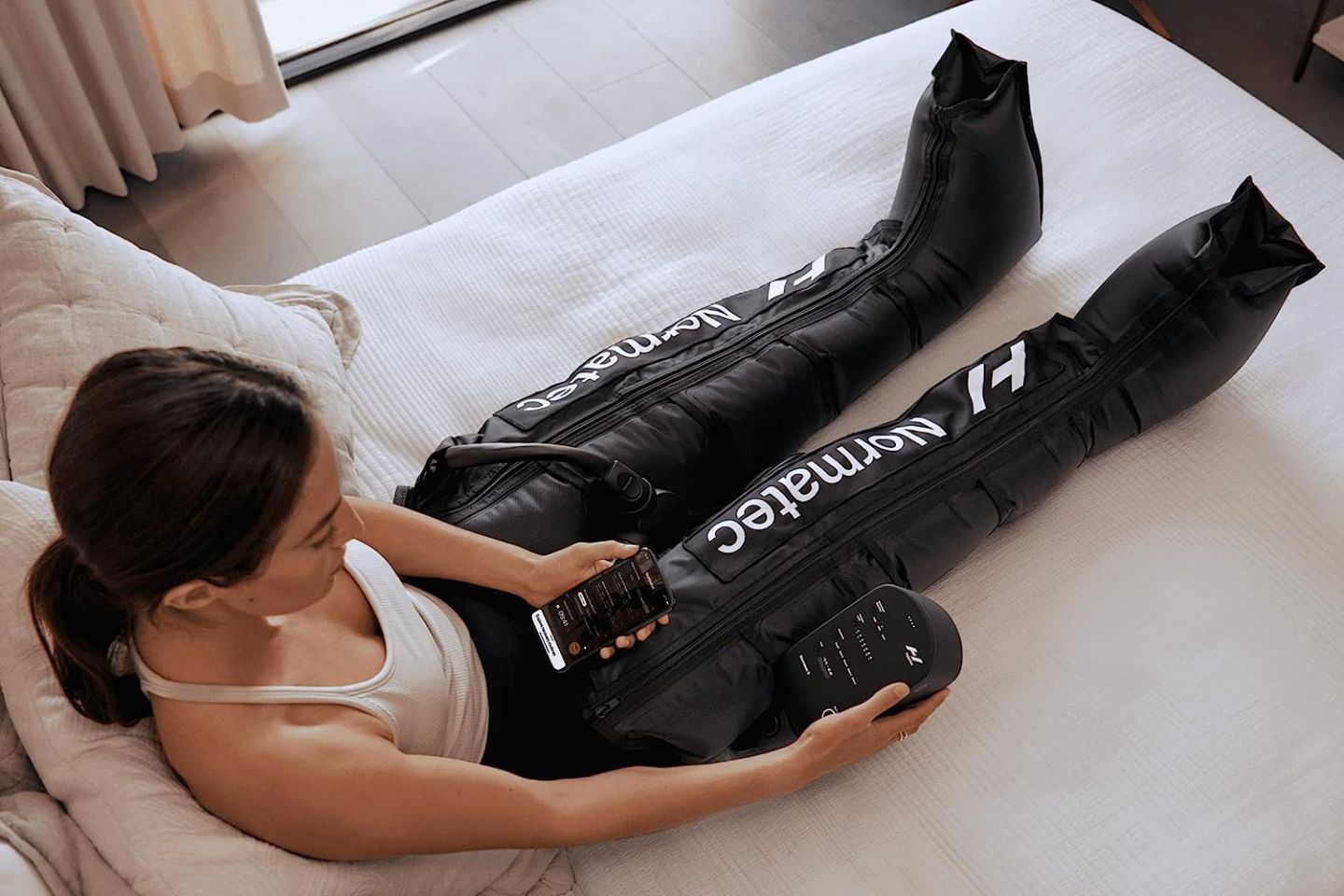

When you incorporate compression boots into your recovery routine, correct fitting and consistent usage are crucial for maximizing their effectiveness.
Fitting and Sizing
To ensure compression boots work effectively, they must fit your legs snugly. Measure your leg size before purchasing or using compression boots to get the correct size. Most compression boots come in various sizes and have adjustable features, like straps, to create a custom fit around your legs. This custom-fit is essential as it allows for the even distribution of pressure that these devices rely on.
Duration and Frequency
For optimal recovery with compression boots, use them for sessions lasting between 30 minutes to one hour. It’s best to incorporate these sessions into your post-workout routine 2-3 times a week.
- Duration: 30-60 minutes
- Frequency: 2-3 times a week
Consistency in your routine is key to reaping the full benefits of enhanced recovery and circulation improvement that compression boots can provide.
Safety and Side Effects
Understanding the safety and side effects is crucial before using compression boots for recovery. You will want to know if you’re good to use them and what risks they may pose.
Contraindications
Certain conditions may prevent you from safely using compression boots. If you have any of the following, you should refrain from using compression boots or consult your healthcare provider:
- Deep vein thrombosis (DVT): Because compression boots substantially increase blood flow, they can potentially dislodge a blood clot.
- Severe circulatory disorders: Those with conditions like peripheral artery disease may be at risk of exacerbating their symptoms.
- Open wounds or skin infections: Compression on areas with open wounds could lead to further complications or infection spread.
Potential Risks
When using compression boots, you should be aware of the following potential risks:
- Overuse: Limit your sessions to 30 minutes to an hour and avoid using them more than 2-3 times a week to prevent any complications from overuse.
- Improper fit or use: Ill-fitting boots or incorrect pressure settings might lead to discomfort or even injury.
- Delayed diagnosis: Relying too heavily on compression boots for recovery could mask symptoms of a more serious condition.
By acknowledging these guidelines, you can better ensure a safe experience with compression boots for recovery.
Choosing the Right Compression Boots
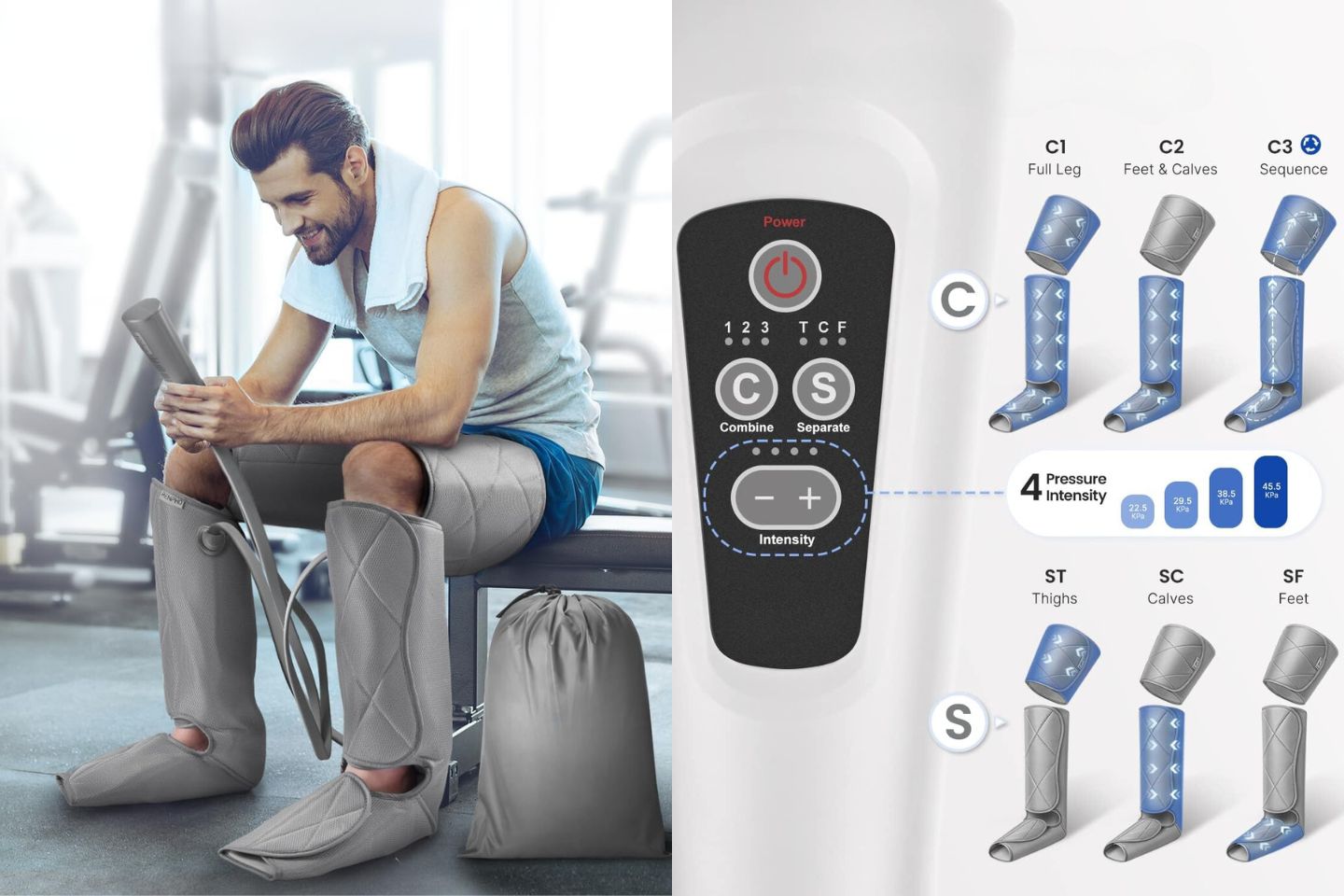

Selecting the ideal compression boots can optimize your recovery process by promoting blood circulation and reducing swelling. Your choice should be informed by specific needs and preferences.
Features to Consider
- Intensity & Usage: Tailor your choice to the intensity of your physical activity and how often you plan to use the boots. Frequent, intense use may demand higher durability and feature sets.
- Fit & Comfort: Ensure the boots offer the correct sizing options and are made from materials that provide comfort during use.
- Adjustability: Look for boots that allow you to adjust pressure levels to cater to different recovery needs.
- Modes & Programs: Some boots offer various modes such as Sequence and Circulation, for tailored pressure distribution.
- Ease of Use: A user-friendly interface and clear instructions are essential. Additional features like remote controls can enhance the user experience.
- Price & Value: Balance the cost of the boots with the features offered. Pricier models might offer more sophisticated features, which can be crucial for some users.
Maintenance and Care
To maintain your compression boots and ensure their longevity, follow a simple yet effective care routine. Here’s a structured approach to keep your equipment in optimal condition:
Cleaning: After each use, wipe down your boots with a damp cloth. For a more thorough clean, use a mild disinfectant spray, paying attention to manufacturer instructions. Avoid harsh chemicals that can damage the material.
Storage: When not in use, store your boots in a cool, dry place. Flatten them out or roll them loosely to prevent creasing or damage to the internal components. Avoid storing them in direct sunlight or in extreme temperatures, which could degrade the materials.
| Do’s: | Don’ts: |
Wipe with a damp cloth Use a mild disinfectant Store in a cool, dry place | Use harsh chemicals Expose to extreme temperatures Leave folded or heavily creased |
Inspection: Regularly inspect the boots for any signs of wear, tear, or damage. Check the hoses and connectors for any leaks or loose parts to prevent interruptions during therapy sessions.
If you notice any issues with the functionality of your compression boots, refer to the manufacturer’s guidelines for troubleshooting or contact customer support.
Replacement Parts: Replace any worn or damaged parts immediately. Always opt for original parts from the manufacturer to guarantee compatibility and the same level of quality performance.
Remember, proper maintenance and care of your compression boots not only prolong their life but also ensure they remain a safe and effective tool in your recovery regimen.
Frequently Asked Questions
In this section, you will find detailed answers to your common queries about compression boots, their effectiveness, usage, and comparative benefits.
What are the proven benefits of using compression boots?
Compression boots are clinically recognized for promoting blood circulation and reducing muscle soreness. They are widely used to lessen the discomfort stemming from intensive physical activities.
Can using compression boots improve recovery after exercise?
Yes, using compression boots can expedite your recovery following exercise. By increasing blood flow and lymphatic drainage, they aid in flushing out waste products that accumulate during a workout.
Are there any risks associated with using compression boots regularly?
Regular use of compression boots is considered safe for most people; however, it’s important to follow manufacturer guidelines and consult with a healthcare provider if you have any underlying health conditions.
How do compression boots help with swelling and inflammation?
Compression boots apply graded pressure to your limbs, which can significantly reduce swelling and inflammation by encouraging the return of blood to your heart and reducing fluid accumulation.
What duration of use is considered safe for compression boots?
A session lasting between 30 minutes to one hour is generally safe and can effectively be part of your post-workout routine 2-3 times a week.
How do Therabody compression boots compare to other brands?
Therabody compression boots are valued for their quality and effectiveness, though other brands like Normatec and Renpho may offer competitive features and pricing.
Disclaimer: Last update on 2024-07-27 / Affiliate links / Images from Amazon Product Advertising API.
This content is provided solely for educational reasons and should not be seen as medical guidance. It’s important to consult with a healthcare expert prior to making any changes to your health regimen, including dietary adjustments or the use of supplements.
Pages on this website may contain affiliate links. As an Amazon Associate, we receive a commission from qualifying purchases. This commission is at no extra cost to you.



